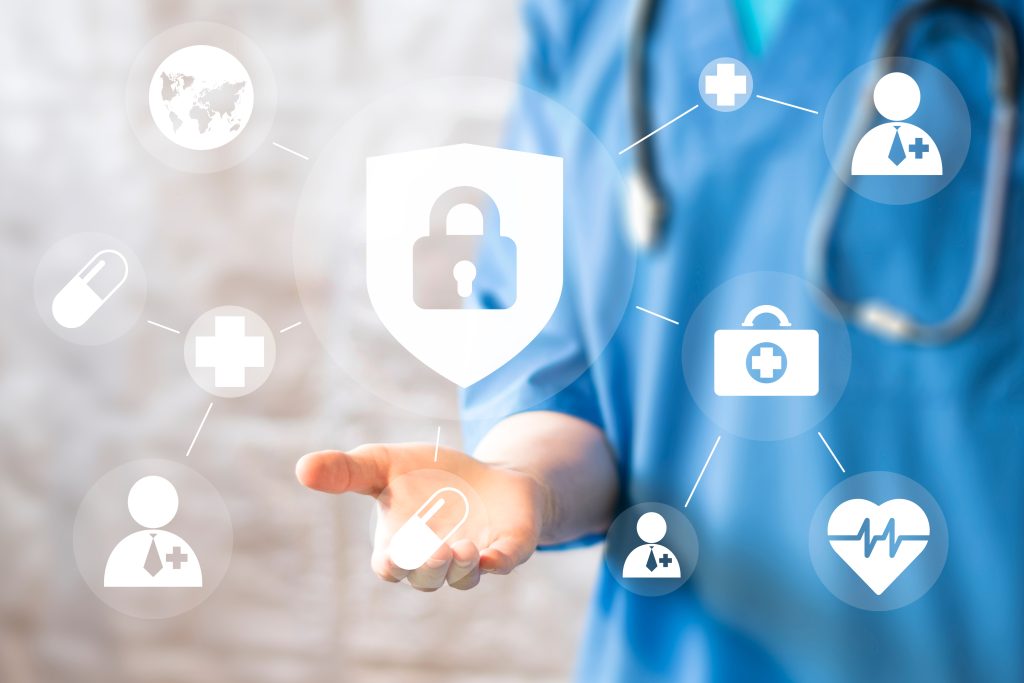In an era where digital innovation is revolutionizing healthcare, the security of sensitive patient data has emerged as a paramount concern. Cybersecurity in healthcare is no longer a supplementary aspect but a core component of patient safety and trust. As we navigate through a landscape where electronic health records (EHRs) and telemedicine are becoming the norm, the risks associated with data breaches, cyber-attacks, and unauthorized access to patient information have escalated dramatically. This article aims to shed light on the critical importance of cybersecurity in the healthcare sector, exploring the vulnerabilities that exist within this digital frontier and the measures necessary to protect the sensitive and personal information of patients.
The healthcare industry, with its wealth of personal and sensitive data, has become a prime target for cybercriminals. The consequences of a breach are not just limited to financial loss or reputational damage; they extend to the very well-being and privacy of patients. In this context, understanding and implementing robust cybersecurity measures is not just a technical necessity but a moral imperative. From small clinics to large hospitals, the responsibility to safeguard patient data is universal, demanding a concerted effort from all stakeholders in the healthcare ecosystem.
In 2022, the healthcare sector experienced a significant surge in cybersecurity incidents, with a reported increase of over 55% in cyber attacks compared to the previous year.
Source: Health and Human Services
As we delve deeper into this topic, we will explore the various facets of cybersecurity in healthcare, from the types of threats that loom over patient data to the strategies that can fortify defenses against these digital predators. Our journey through this article will not only highlight the challenges but also illuminate the path forward for healthcare providers, administrators, and policymakers in their quest to shield patient data from the ever-evolving threats of the cyber world.
Understanding Cybersecurity in the Healthcare Sector

The healthcare sector’s journey towards digitalization, while bringing numerous benefits, has also introduced a complex array of cybersecurity challenges. Understanding these challenges is the first step in developing effective strategies to protect patient data.
The Digital Transformation of Healthcare
The shift towards digital healthcare has been monumental. Electronic Health Records (EHRs), telemedicine, mobile health applications, and cloud-based data storage have transformed how healthcare providers store, access, and share patient information. While these advancements have improved efficiency and patient care, they have also made healthcare data more accessible to cybercriminals. The interconnected nature of these digital systems means that a breach in one area can potentially compromise an entire network.
Common Cyber Threats in Healthcare
Healthcare organizations face a variety of cyber threats, each with its own set of challenges:
- Ransomware Attacks: These involve hackers encrypting patient data and demanding a ransom for its release. Healthcare institutions, given their need for immediate access to patient records, are particularly vulnerable to these attacks.
- Phishing Scams: These scams trick healthcare employees into revealing sensitive information or credentials. Given the busy and high-pressure environment in healthcare settings, staff might inadvertently click on malicious links or download harmful software.
- Data Breaches: These can occur through various means, including hacking, employee negligence, or system vulnerabilities. The consequences are severe, ranging from financial loss to compromised patient care and privacy.
- Insider Threats: Sometimes, the threat comes from within the organization. Disgruntled employees, or those with malicious intent, can misuse their access to sensitive data.
- IoT Vulnerabilities: With the increasing use of Internet of Things (IoT) devices in healthcare, like wearable health monitors and connected medical devices, new vulnerabilities emerge. These devices often lack robust security features, making them easy targets for cybercriminals.
The Need for a Comprehensive Cybersecurity Strategy
To address these threats, healthcare organizations must develop a comprehensive cybersecurity strategy. This strategy should encompass not only technological solutions but also organizational and human factors. Key components include:
- Risk Assessment: Regularly assessing the cybersecurity risks and identifying potential vulnerabilities in the system.
- Employee Training and Awareness: Ensuring that all staff members are educated about the importance of cybersecurity and are trained to recognize and respond to cyber threats.
- Data Encryption and Secure Access: Implementing strong encryption protocols for storing and transmitting data and ensuring secure access controls.
- Regular Software Updates and Patch Management: Keeping all systems and software up to date to protect against known vulnerabilities.
- Incident Response Plan: Having a robust plan in place to respond to cybersecurity incidents effectively and minimize damage.
- Collaboration and Sharing of Best Practices: Engaging in partnerships with other healthcare organizations and cybersecurity experts to stay informed about the latest threats and defense mechanisms.
In conclusion, understanding cybersecurity in the healthcare sector is a multifaceted challenge that requires a proactive and comprehensive approach. As the sector continues to evolve digitally, the strategies to protect the sensitive and vital patient data must also advance, ensuring the trust and safety of patients and the integrity of the healthcare system.
Implementing Robust Cybersecurity Measures

In the face of growing cyber threats, implementing robust cybersecurity measures is crucial for the healthcare sector. These measures are not just about deploying advanced technologies; they encompass a holistic approach involving technology, processes, and people.
Essential Cybersecurity Practices in Healthcare
- Risk Management and Assessment: Regular risk assessments are vital. Healthcare organizations should identify potential vulnerabilities in their systems and evaluate the likelihood and impact of different types of cyber threats. This ongoing process helps in prioritizing security efforts and resources effectively.
- Data Encryption and Secure Storage: Encrypting patient data both at rest and in transit is a fundamental practice. Secure storage solutions, including cloud services with strong security protocols, are essential to protect data from unauthorized access and breaches.
- Network Security: Robust network security measures, including firewalls, intrusion detection systems, and secure Wi-Fi networks, are crucial. Regularly monitoring and auditing network traffic can help detect and prevent unauthorized access.
- Access Control and Authentication: Implementing strict access control policies ensures that only authorized personnel have access to sensitive data. Strong authentication methods, like two-factor authentication, add an extra layer of security.
- Regular Software Updates and Patch Management: Keeping all software and systems up to date with the latest security patches is critical. Cybercriminals often exploit known vulnerabilities, so timely updates can significantly reduce risks.
- Endpoint Protection: With the increasing use of mobile devices and remote access in healthcare, securing these endpoints is essential. This includes using antivirus software, securing mobile devices, and monitoring for suspicious activities.
Advanced Technologies for Data Protection
- Artificial Intelligence and Machine Learning: AI and ML can be leveraged to detect and respond to threats more efficiently. These technologies can analyze patterns and predict potential security incidents before they occur.
- Blockchain Technology: Blockchain can offer a secure and transparent way to store health records, ensuring data integrity and traceability while preventing unauthorized access and tampering.
- Cloud Security Solutions: Utilizing secure cloud services with robust encryption and security protocols can enhance data protection and offer scalable solutions for data storage and management.
Building a Culture of Cybersecurity Awareness
- Training and Education: Regular training and awareness programs for all healthcare staff are crucial. Employees should be educated about the latest cyber threats and best practices for maintaining cybersecurity.
- Simulated Cybersecurity Attacks: Conducting simulated attacks can help in assessing the readiness of the organization and the effectiveness of the response strategies.
- Policy Development and Enforcement: Developing clear cybersecurity policies and ensuring their strict enforcement is essential. These policies should cover aspects like data handling, device usage, and incident reporting.
Continual Improvement and Adaptation
Cybersecurity is an evolving field, and healthcare organizations must continually adapt their strategies to counter new threats. This includes staying informed about the latest cybersecurity trends, investing in ongoing training and technology upgrades, and regularly reviewing and updating cybersecurity policies and practices.
In summary, implementing robust cybersecurity measures in healthcare is a comprehensive endeavor that requires a blend of advanced technology, stringent processes, and continuous education. By adopting these practices, healthcare organizations can significantly enhance their defenses against cyber threats, ensuring the safety and privacy of patient data.
The Role of Healthcare Professionals in Cybersecurity

Healthcare professionals play a crucial role in maintaining cybersecurity. Their daily interactions with patient data and healthcare systems place them at the frontline of defense against cyber threats. Understanding and actively participating in cybersecurity measures is essential for safeguarding sensitive patient information.
Training and Awareness
- Regular Cybersecurity Training: Healthcare professionals should receive regular training on the latest cybersecurity threats and best practices. This training should cover topics like identifying phishing emails, secure handling of patient data, and proper use of security tools.
- Creating a Culture of Security Awareness: Building a culture where cybersecurity is a shared responsibility is vital. Encouraging open discussions about cyber threats and promoting a proactive approach to security can significantly enhance overall protection.
- Staying Informed: Professionals should be encouraged to stay informed about the latest cybersecurity trends and threats, especially those specifically targeting the healthcare sector.
Best Practices for Everyday Data Handling
- Secure Data Handling: Healthcare professionals should follow best practices for handling patient data securely. This includes using strong passwords, logging out of systems when not in use, and being cautious about sharing sensitive information.
- Device Management: Proper management of devices used for work, such as computers, tablets, and smartphones, is crucial. This includes using secure connections, updating software regularly, and avoiding the use of unsecured public Wi-Fi for accessing patient data.
- Reporting Suspicious Activities: Encouraging staff to report any suspicious activities or potential breaches immediately can help in early detection and mitigation of cyber threats.
The Role in Incident Response
- Understanding the Incident Response Plan: Healthcare professionals should be familiar with their organization’s incident response plan. Knowing the steps to take in the event of a cybersecurity incident is crucial for a quick and effective response.
- Active Participation in Drills and Simulations: Participating in regular drills and simulations can help staff understand their role during a cybersecurity incident, ensuring a coordinated and efficient response.
Collaboration and Communication
- Interdepartmental Collaboration: Effective cybersecurity requires collaboration across different departments. Healthcare professionals should work closely with IT and cybersecurity teams to ensure that security measures are practical and do not impede patient care.
- Clear Communication Channels: Establishing clear communication channels for reporting cybersecurity issues and sharing information about potential threats is essential.
Ethical and Legal Responsibilities
- Understanding Legal Obligations: Healthcare professionals must be aware of their legal obligations regarding patient data protection, such as those outlined in HIPAA and other relevant regulations.
- Ethical Considerations: Beyond legal requirements, there is an ethical duty to protect patient privacy and data. Healthcare professionals should be mindful of the ethical implications of data breaches and the importance of maintaining patient trust.
Conclusion
In summary, cybersecurity in healthcare is a critical issue that extends beyond technology to encompass the responsibility of every healthcare professional. As the sector evolves digitally, so too must our strategies to protect sensitive patient data. This involves not only implementing robust cybersecurity measures but also fostering a culture of awareness and continuous learning among healthcare staff. The goal is to create a secure environment where patient trust is upheld, and the integrity of healthcare services is maintained. Embracing this challenge is essential for safeguarding the future of healthcare in our increasingly digital world.





